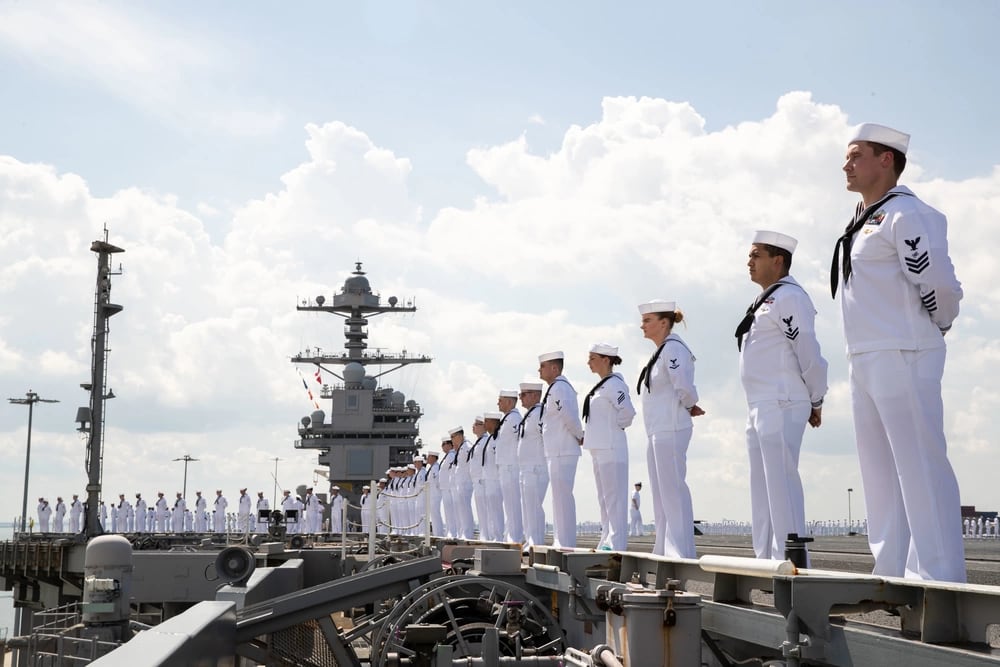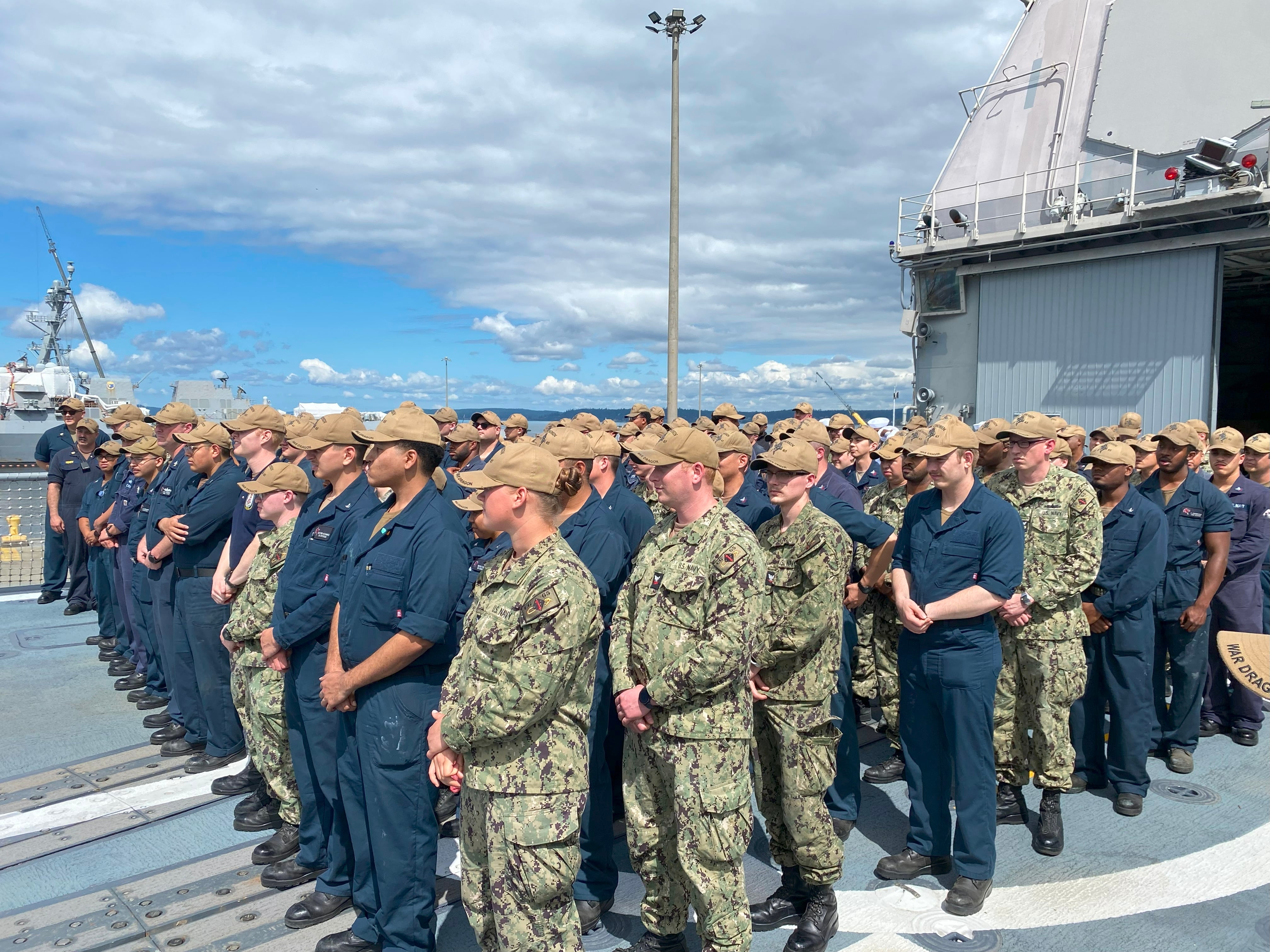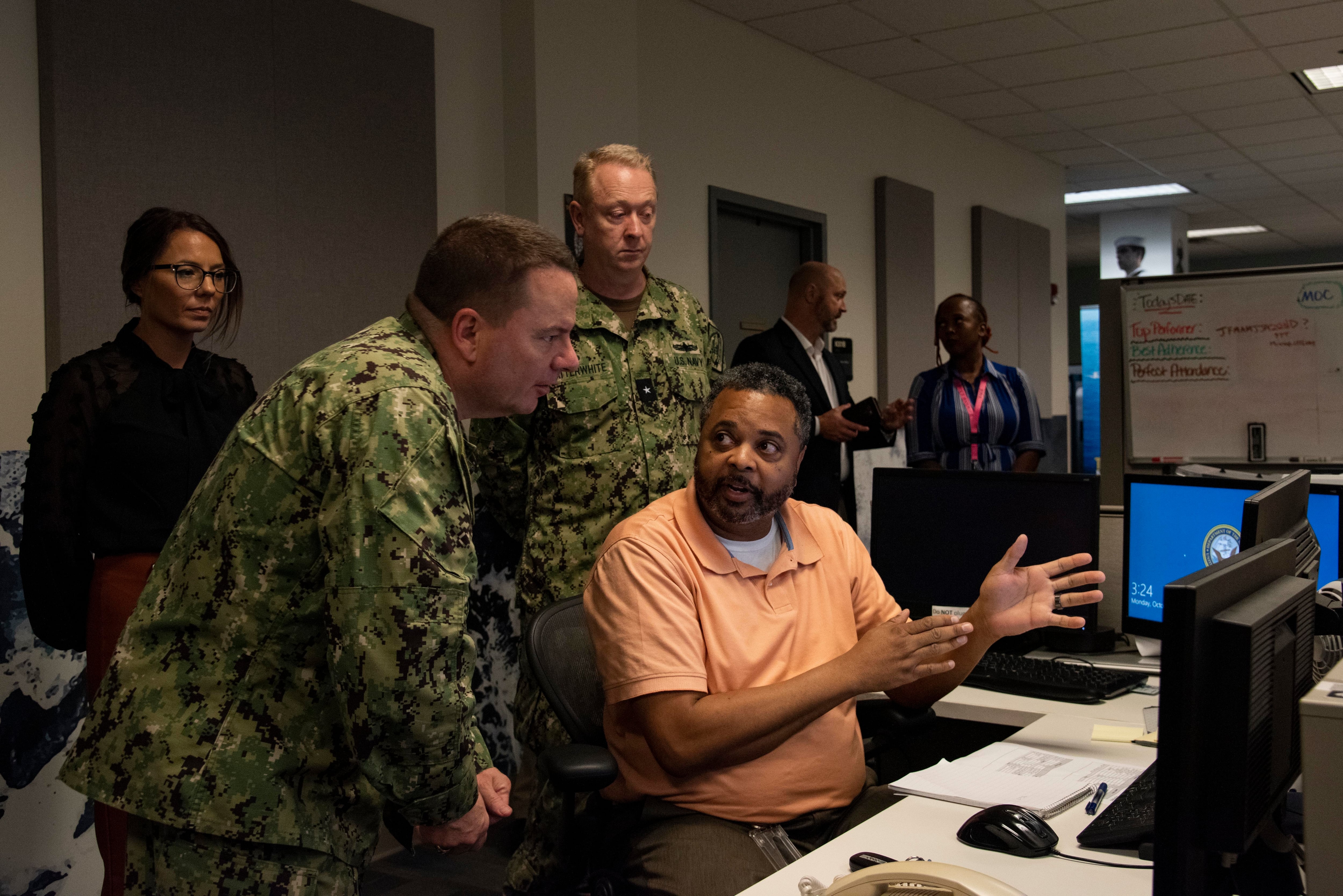Roughly 14 months after the Navy promised to do better for sailors when it comes to processing their pay, personnel needs and DD-214 retirement paperwork, officials say they have gotten the wait times to within the Defense Department standards and are seeking to continue to cut down processing times.
“We’re within the DoD standards across the board for pay services for sailors,” Rear Adm. Stuart Satterwhite, the head of the Navy’s human resources enterprise, said in an interview with Navy Times earlier this month. “Last summer, we were out of those standards.”
Despite a summer surge of travel claims submitted by sailors in connection to permanent change of station moves, Satterwhite said that the Navy is processing those claims within 10 days, well within the 30-day DoD standard.
“If I was to go back to June of last year for my travel claims, it probably would have taken over 100 days,” he said. “So, that’s pretty significant.”
“We’re going to drive to continue to improve the time it takes to deliver, to get a sailor’s transaction addressed and paid to get money in their pocket,” he added.
RELATED

When it comes to processing DD-214 paperwork for a sailor’s separation or retirement, Satterwhite said the service is making strides in ensuring sailors have those records in hand when they go on terminal leave.
“Right now, we’re in September, and we are processing all the way out into January’s separation and retirements where that paperwork has been submitted,” he said. “I already have DD-214s out for members’ review to January right now.”
For other military pay changes and transactions, Satterwhite said earlier this month that the service was processing things like basic allowance to housing adjustments in eight days, when the DoD standard is 30 days.
But late separation or retirement packages still gum up the system, and the Navy has urged sailors to put in their separation or retirement paperwork at least 60 days prior to the start of terminal leave.
He said he assumes every departing sailor will take 60 days of terminal leave as well, so any paperwork filed within 120 days before a sailor’s departure date isn’t coming in on time.
Those sailors who are late filing their package are still dealt with first so that they have their DD-214 in hand when they leave, but it causes other sailors who did file on time to be pushed back in the queue, Satterwhite said.
As a result, Navy HR is pushing commands to ensure that such paperwork is filed as early as possible.
The so-called “Enhanced Unit Commander’s Financial Report” now includes a column that shows triads which sailors are within 180 days of their scheduled departure date, so that they can track sailors who are deciding if they are going to separate or retire, Satterwhite said.
Satterwhite credits much of the processing time improvement to transaction service centers and support centers stood up last year that are exclusively focused on certain fleet pay and personnel categories.
RELATED

Meanwhile, Satterwhite and his boss, Chief of Naval Personnel Vice Adm. Rick Cheeseman, said they are focused on the continuing and difficult task of modernizing the Navy’s assorted information technology systems that handle sailor pay, personnel and benefits.
Navy Times reported earlier this year on challenges the service has faced during its so-called “HR Transformation,” which involves consolidating and modernizing a series of very old IT systems that handle different Navy tasks.
Such jobs are heavy lifts for any organization, but during a townhall aboard the guided-missile cruiser Chosin in August, Cheeseman wondered aloud why all these old Navy IT systems don’t take to each other better.

He pointed out how, during a PCS move, sailors should be tracked from the losing command to the gaining command in one system.
“Right now, we get surprised when somebody submits their travel claim late, but it’s my organization that issues the orders to begin with, just in a different building in Millington,” the Tennessee home of Navy Personnel Command, Cheeseman said.
“So why can’t it be: orders get issued, a (case number) automatically gets generated, … an email gets sent to you, the gaining and the losing command, ‘congratulations, here’s orders for ET2 whoever … here’s his loss date, here’s where he needs to be,’” he continued. “And then the loss transaction is processed under that (case number), the travel is conducted under that (case number), the gain is conducted under that (case number), and then we know because we see the case generated the minute the orders are issued.”
If a sailor has been at his or her new command for five days but has yet to file a travel claim, that overarching system would be tracking it and can help ensure the sailor files and is paid fast, Cheeseman said.
Such a system would be efficient and transparent, he added.
While Cheeseman called such a system “the future,” he and other leaders have admitted in the past that HR modernization is difficult.
“We’re close to that, in our lab,” he told Chosin sailors in August. “We got to be able to scale it.”
Geoff is the managing editor of Military Times, but he still loves writing stories. He covered Iraq and Afghanistan extensively and was a reporter at the Chicago Tribune. He welcomes any and all kinds of tips at geoffz@militarytimes.com.










